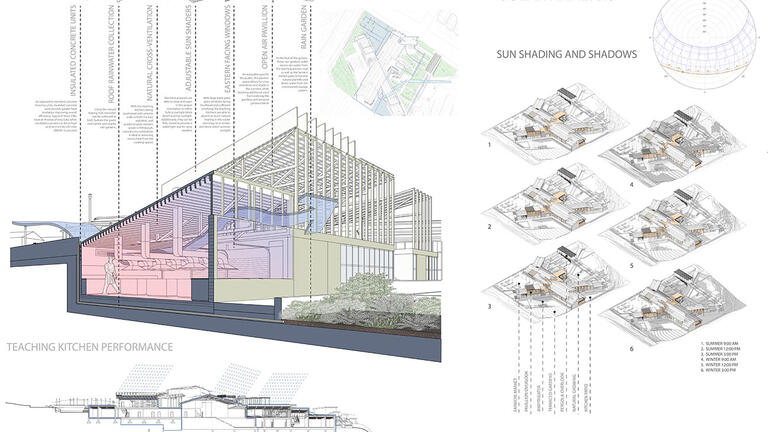Introduction to Building Performance
This course introduces fundamental concepts of building physics. The knowledge and skills obtained from this course can be applied to studio projects and beyond, improving building design and performance through standard methods of evaluation and simulation tools.
Fulfills minor requirements for: Architectural Technology (non-majors)

Building Performance Fundamentals Final Project 2022: Charlie Hymowitz, Isabella Yaoran Shi, Selina Yanan Zhou.
This course introduces fundamental concepts of building physics. The knowledge and skills obtained from this course can be applied to studio projects and beyond, improving building design and performance through standard methods of evaluation and simulation tools. The course curriculum runs concurrent with studio projects to aid students in further developing and guiding design decisions to incorporate fundamental concepts related to climate, energy, light, relationship to site, and occupant visual and thermal comfort.
Students develop a general understanding of site analysis, building placement and form as it relates to building performance, photometric principles to evaluate lighting conditions, thermodynamic principles, as well as heat transfer, building energy, renewable energy and embodied energy. The skills, tools and knowledgebase learned in this course enables designers and architects to employ sustainable practices at all phases of design, leading to better performing buildings.